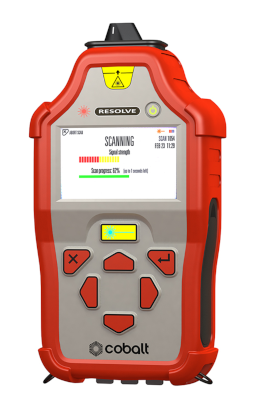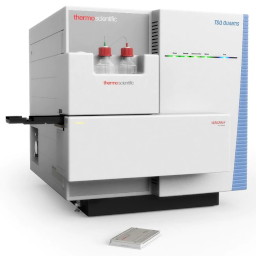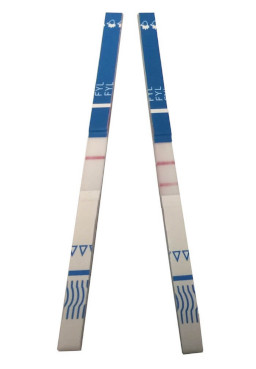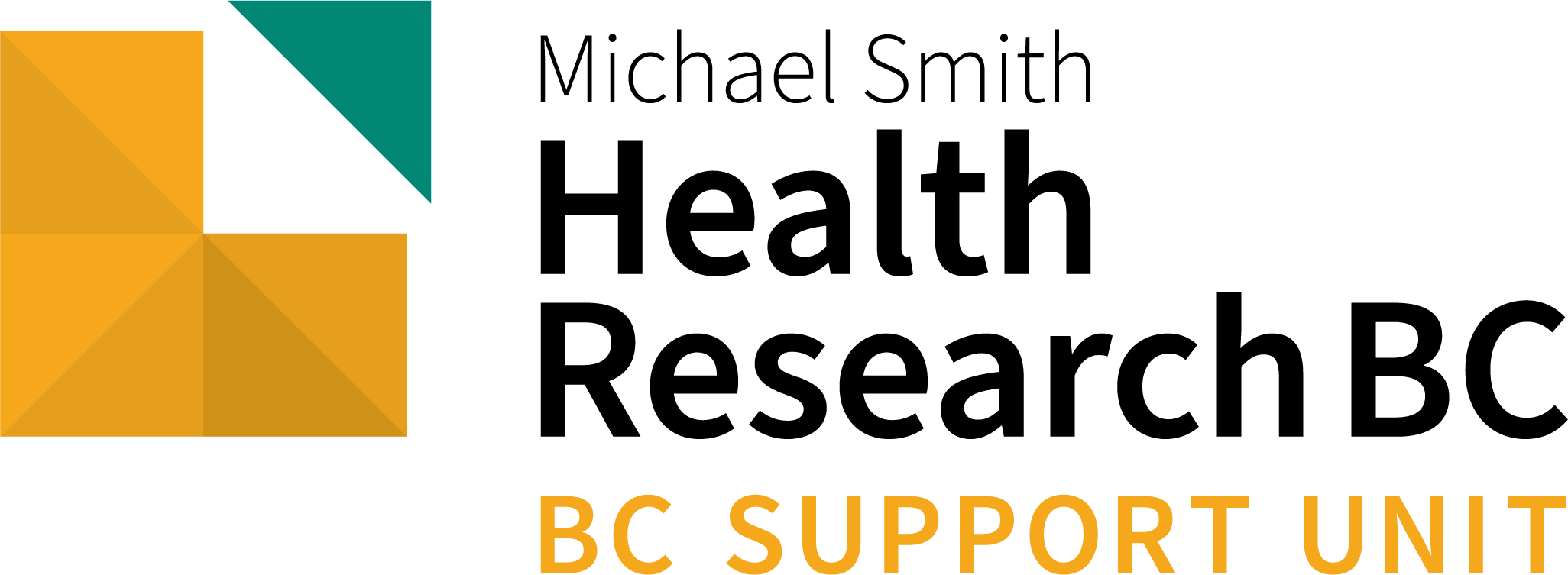Mission
In the midst of the overdose epidemic and the criminalization of illicit substances,we’re interested in exploring the opportunities and benefits of different drug checking instruments, technologies and practices. Ultimately, we hope to better understand how drug checking can support those impacted by and responding to the overdose crisis, with attention to principles of harm reduction and social justice and the impacts of current drug policy.
Acknowledgment
Our project works on Indigenous land. We provide drug checking, harm reduction education and support across
many territories on what is colonially known as ‘Vancouver Island.’ We also act as a resource for these services across the province colonially known as ‘British Columbia.’ We honour and offer respect to many nations for their stewardship, care and leadership on these lands.
Our project originated on the territories of the lək̓ʷəŋən speaking peoples, including the Songhees and Xwsepsum (Esquimalt) Nations, and the W̱SÁNEĆ (Saanich) Nations on whose land the University of Victoria is located. Some of the territories we are honoured to work across specifically include: Halalt, Lyackson, Meluxulh (Malahat), Punelux-utth’, Quw’utsun, Stz-uminus, and Ts’uubaa-asatx; Hupačasath and Tseshaht; K’ómoks; and Laich-kwil-tach.
We acknowledge the inextricable links between research, colonization and racism against Indigenous peoples, which continue to this date. Ending the violence faced by people who use drugs cannot be achieved without actively working on decolonization.
Services
We offer a free and confidential drug checking program in Victoria, British Columbia. Our team uses multiple drug checking instruments to determine a sample's main active ingredients, fillers or cutting agents, any unexpected drugs, and the presence of fentanyl. We are providing in-person services and results are given on the spot in as little as 30 minutes, with busier days having an estimated turnaround time of 1-2 hours. We take our last sample at 6:30 PM and recommend dropping off samples earlier in the day to ensure results are completed same-day.
When and where
Substance
1802 Cook StreetVictoria, BC
V8T 3P6
Monday - Friday
12PM - 7PM
last sample collected at 6:30PM
Distributed Model Drug Checking Sites
Port Alberni
Port Alberni Shelter Society Overdose Prevention Site3699 3rd Ave, Port Alberni, BC
Comox Valley
AVI Health & Community Services355 6th St, Courtenay, BC
Campbell River
Vancouver Island Mental Health Society Overdose Prevention Site1330 Dogwood St, Unit #5, Campbell River, BC
Duncan
Duncan Lookout Society Overdose Prevention SiteCowichan Valley Wellness and Recovery Center
5878 York Road, Duncan, BC
Campbell River AVI
AVI Health & Community Services1371 C Cedar Street, Campbell River BC
Port Hardy
Island Health Mental Health and Substance Use7070 Shorncliffe Ave, Port Hardy, BC
Send a sample
Those who would like to receive free and confidential comprehensive drug checking using FTIR Spectroscopy and Paper-Spray Mass Spectrometry can now send us their samples and receive their results online using their unique, anonymous numerical code through our online portal. Instructions can be found in the downloaded PDF.
If you do not have access to a printer, you may send us an email with your completed form instead.
Are you a service provider or community group that would like to offer on-site drug checking sample collection? Ask us about the new Urgent Public Health Needs Site exemption sanctioning drug sample collection and checking so that those you support can access drug checking services.
This is a pilot project and the technology has limitations.
We can't tell you if something is safe or unsafe for you to use.
What we can usually tell you about a sample
- The main active ingredient
- Contaminants (such as other unexpected drugs)
- Inert 'cutting agents' or 'buffs' used as a filler
- Approximate amount of the active ingredient compared to other ingredients
- Fentanyl or fentanyl analogues, even in trace amounts (using fentanyl strips)
What we can't tell you about a sample
- If it's “pure”
- The exact percentages of different ingredients in the mixture
- If there's something in the mixture that we don't have in our reference database
- We may not be able to detect all substances present - some potent substances can be toxic at low levels
Access to the service is free, voluntary and confidential. We require about 10 mg minimum of your sample (the size of a grain of rice). We only take as much as we require for the drug check, as the amount we take is destroyed in the process.
When you come in, we'll go over the limitations of drug checking. We'll ask you a few questions about the substance you brought in so we can provide you with better results and information, and as part of our research – you can skip any of the questions. Because the service is part of a research project, we'll go over how and why we would use the information you share, so you can make an informed decision about how you want to participate.
Next, we'll ask for a small sample and start to run our tests. You'll get most of it back, except for about a grain of rice. Testing takes about 20 minutes. While you're waiting for results, you can participate in an optional survey that asks about you, the substances you brought, and your thoughts on drug checking.
After we've had a chance to run tests and interpret results, we'll go over results together, such as: main active ingredient(s); contaminants (such as unexpected drugs); inert cutting agents; approximate amounts of the active compared to other ingredients; the presence of fentanyl or fentanyl analogies. We also offer harm reduction supplies and information, if needed.
Research
Through the evaluation and research of this pilot project, we seek to evaluate and compare the utility of several instruments and technologies in terms of cost, efficiency, and portability, as well as conduct surveys and interviews with service users to explore the utility of drug checking services and what works for whom, in what settings.
Service users will have the option to participate in surveys and interviews concerning their views on drug checking. Based on evidence from the pilot and evaluation we hope to develop a framework for further implementation, integration and scale-up of drug checking, linking harm reduction, health equity and social justice to the provision of drug checking.
- Provide service users with further information about the composition of illicit substances than that currently available in the context of prohibition;
- Determine the utility of a variety of drug checking instruments across different settings;
- Offer drug checking reports via project website and other formats to inform service users and the general public of test results and aggregate data;
- Effectively integrate drug checking services within harm reduction and health services, contributing to reduced illicit drug overdose events and fatalities;
- Reduce stigma and criminalization for people who use drugs and improve health outcomes.
To meet our goals, we're offering a drug checking service at a few sites in Victoria while measuring its impacts through surveys and interviews with service users, while testing different drug checking instruments by effectiveness, acceptability, efficiency, accessibility, and appropriateness. We're also building an online database to link the chemical information each instrument detects with analytical and visualization tools to report on and project trends, reporting updates via our project website, while offering instrument data for analysis by citizen scientists.
Surveys and interviews aim to learn more about developing services across social location, with attention to processes and impacts of current drug policy and systemic oppression, asking questions about whether existing services meet user expectations, harm reduction practices in the overdose crisis, and how services should be offered.
Project staff work from diverse backgrounds including social work, chemistry and computer science, housed at the University of Victoria and hosted at services across Victoria. Together with project partners (including people who use drugs, local harm reduction services, the health authority, the provincial government, and instrument developers), over the next few years the project will develop services beyond Victoria, with suburban and rural communities throughout Vancouver Island; develop strategies to more permanently integrate drug checking into harm reduction services; and collaborate with drug checking projects across Canada to develop best practices.
Funded by grants from Health Canada and the Vancouver Foundation, project partners include the B.C. Ministry of Mental Health and Addictions, Island Health, harm reduction services (STS Pharmacy, AVI, SOLID Outreach Services), industry (Perkin Elmer, Cobalt, ProSpect Scientific, IBM). Ethical review for this project was provided by the Health Research Ethics Board at Island Health (HREB).
Publications
Implementing community drug checking in smaller urban communities: a qualitative study exploring contextual factors to consider.
2025Hutchison, A., Urbanoski, K., Hore, D., & Wallace, B.
Visioning towards a decolonized, Indigenous-centered service model for drug checking: An auto-ethnographic exploration.
2025Littlechild, S., Wallace, B., & Hore, D.
Development of a high-resolution paper-spray mass spectrometry method using street drugs for the early detection of emerging drugs in the unregulated supply.
2025Miskulin, A., Wallace, B., Hore, D. K., & Gill, C.
Is fentanyl in everything? Examining the unexpected occurrence of illicit opioids in British Columbia’s drug supply.
2025Wallace, B., Shkolnikov, I., Kielty, C., Robinson, D., Gozdzialski, L., Jai, J., Margolese, A., Gonzalez-Nieto, P., Saatchi, A., Zarkovic, T., Gill, C. & Hore, D.
Not just fentanyl: Understanding the complexities of the unregulated opioid supply through results from a drug checking service in British Columbia, Canada
2025Gonzalez-Nieto, P., Wallace, B., Kielty, C., Gruntman, K., Robinson, D., Substance Staff, Arredondo Sanchez Lira, J., Gill, C., & Hore, D.
Evaluation of a Drug Checking Training Program for Frontline Harm Reduction Workers and Implications for Practice
2024Teal, T., Wallace, B., Hore, D.
Trace Detection of Adulterants in Illicit Opioid Samples using Surface-Enhanced Raman Scattering and Random Forest Classification.
2024Martens, R., Gozdzialski, L., Newman, E., Gill, C., Wallace, B., Hore, D.
Beyond a spec: assessing heterogeneity in the unregulated opioid supply
2024Gozdzialski, L., Louw, R., Kielty, C., Margolese, A., Poarch, E., Sherman, M., Cameron, F., Gill, C., Wallace, B., Hore, D.
Toward automated infrared spectral analysis in community drug checking
2023Gozdzialski, L., Hutchison, A., Wallace, B., Gill, C., Hore, D.
Point-of-care community drug checking technologies: an insider look at the scientific principles and practical considerations
2023Gozdzialski, L., Wallace, B., Hore, D.
Evaluation and improvement of a miniature mass spectrometry system for quantitative harm reduction drug checking
2023Laxton, J. C., Monaghan, J., Wallace, B., Hore, D., Wang, N., Gill, C. G.
Carfentanil structural analogs found in street drugs by paper spray mass spectrometry and their characterization by high resolution mass spectrometry
2023Borden, S., Mercer, S.R., Saatchi, A., Wong, E., Stefan, C., Wiebe, H., Hore, D., Wallace, B., Gill, C.G.
Everywhere and for everyone: Proportionate universalism as a framework for equitable access to community drug checking
2022Wallace, B., van Roode, T., Burek, P., Hore, D., Pauly, B.
A distributed model to expand the reach of drug checking
2022Wallace, B., Gozdzialski, L., Qbaich, A., Shafiul, A., Burek, P., Hutchison, A., Teal, T., Louw, R., Kielty, C., Robinson, D., Moa, B., Storey, MA., Gill, C., Hore, D.
Exploring the use of infrared absorption spectroscopy and two-trace two-dimensional correlation analysis for the resolution of multi-component drug mixtures.
2022Gozdzialski, L., Wallace, B., Noda, I., Hore, D.
Substance use stigma and community drug checking: A qualitative study examining barriers and possible responses
2022Davis, S., Wallace, B., Van Roode, T., Hore, D.
Implementing drug checking as an illicit drug market intervention within the supply chain in a Canadian setting
2022Wallace, B., van Roode, T., Burek, P., Pauly, B., Hore, D.
Rapid and accurate etizolam detection using Surface-Enhanced Raman Spectroscopy for community drug checking
2022Gozdzialski, L., Rowley, A., Borden, S. A., Saatchi, A., Gill, C. G., Wallace, B., Hore, D.
Portable gas chromatography–mass spectrometry in drug checking: Detection of carfentanil and etizolam in expected opioid samples
2021Gozdzialski, L., Aasen, J., Larnder, A., Ramsay, M., Borden, S. A., Saatchi, A., Gill, C. G., Wallace, B., Hore, D.
Third party drug checking: accessing harm reduction services on the behalf of others
2021Larnder, A., Burek, P., Wallace, B., Hore, D.
Implementing an integrated multi‐technology platform for drug checking: Social, scientific, and technological considerations
2021Wallace, B., Hills, R., Rothwell, J., Kumar, D., Garber, I., van Roode, T., Larnder, A., Pagan, F., Aasen, J., Weatherston, J., Gozdzialski, L., Ramsay, M., Burek, P., Shafiul, A., Pauly, B., Storey, M., Hore, D.
The potential impacts of community drug checking within the overdose crisis: qualitative study exploring the perspective of prospective service users
2021Wallace, B., van Roode, T., Pagan, F., Hore, D., Bernadette, P.
Fentanyl detection and quantification using portable Raman spectroscopy in community drug checking
2021Gozdzialski, L., Ramsay, M., Larnder, A., Wallace, B., Hore, D.
Linear programming for spectral mixture analysis: Determining the composition of drugs using Raman spectroscopy
2021Gozdzialski, L., Wallace, B., Stege, U., Hore, D.
Fentanyl quantification using portable infrared absorption spectroscopy: A framework for community drug checking
2021Ramsay, M., Gozdzialski, L., Larnder, A., Wallace, B., Hore, D.
What is needed for implementing drug checking services in the context of the overdose crisis? A qualitative study to explore perspectives of potential service users
2020Wallace, B., van Roode, T., Pagan, F., Phillips, P., Wagner, H., Calder, S., Aasen, J., Pauly, B., Hore, D.
Research Summaries
- Point-of-care community drug checking technologies: an insider look at the scientific principles and practical considerations
- Carfentanil structural analogs found in street drugs by paper spray mass spectrometry and their characterization by high resolution mass spectrometry
- A distributed model to expand the reach of drug checking
- Substance use stigma and community drug checking: A qualitative study examining barriers and possible responses
- Rapid and accurate etizolam detection using Surface-Enhanced Raman Spectroscopy for community drug checking
- Portable gas chromatography–mass spectrometry in drug checking: Detection of carfentanil and etizolam in expected opioid samples
- Third party drug checking: accessing harm reduction services on the behalf of others
- The potential impacts of community drug checking within the overdose crisis: qualitative study exploring the perspective of prospective service users
Reports
We aim to develop resources to support the development of drug checking services that operate according to principles of harm reduction and social justice, and meet the needs of service users within the context of the overdose crisis.
See the blog portion of our site to access our monthly reports
alongside addition interpretations from our drug checking technicians.
PDFs also available here. Our initiative
was formerly known as the Vancouver Island Drug Checking Project.

Year End Report - 2024
The Substance Drug Checking Year End Report summarizes key indicators from drug checking services from 1 January – 31 December, 2024. We provide information on substances tested across the year and consider implications for harm reduction strategies, delivery of drug checking services, and policies around harm reduction and substance use.
Read the report
Year End Report - 2023
The Substance Drug Checking Year End Report summarizes key indicators from drug checking services from 1 January – 31 December, 2023. We provide information on substances tested across the year and consider implications for harm reduction strategies, delivery of drug checking services, and policies around harm reduction and substance use.
Read the report
Year End Report - 2022
The Substance Drug Checking Year End Report summarizes key indicators from drug checking services from 1 January – 31 December, 2022. We provide information on substances tested across the year and consider implications for harm reduction strategies, delivery of drug checking services, and policies around harm reduction and substance use.
Read the report
Year End Report - 2021
The Vancouver Island Drug Checking Project Year End Report summarizes key indicators from drug checking services from 1 January – 31 December, 2021. We provide information on substances tested across the year and consider implications for harm reduction strategies, delivery of drug checking services, and policies around harm reduction and substance use.
Read the report
Year End Report - 2020
The Vancouver Island Drug Checking Project Year End Report summarizes key indicators from drug checking services from 1 January – 31 December, 2020. We provide information on substances tested across the year and consider implications for harm reduction strategies, delivery of drug checking services, and policies around harm reduction and substance use.
Read the report
Year End Report - 2019
The Vancouver Island Drug Checking Project Year End Report summarizes key indicators from drug checking services from 1 January – 31 December, 2019. We provide information on substances tested across the year and consider implications for harm reduction strategies, delivery of drug checking services, and policies around harm reduction and substance use.
Read the reportResources
Drug Checking FAQs
- About Substance
- How Drug Checking Technologies Work
- Drug Checking Technology Benefits and Limitations
- Community Drug Checking Services in British Columbia/Yukon: An Environmental Scan
- Youth and Drug Checking: FAQs
- Am I Included in the New Drug Decriminalization Laws in BC?
- Implementing drug checking as an illicit drug market intervention within the supply chain in a Canadian setting
- Variability in the unregulated opioid market in the context of extreme rates of overdose
- Fentanyl Screening Is Not Drug Checking
- Still not a bad batch: Responding to the coronors' numbers ad infinitum
- 2023 Event and Festival Report
- Xylazine in 2023: FAQs
- Xylazine: A frank scope of tranq-dope
- Benzodiazepines: an emergent trend
- Benzos in Down: A Quick Guide to What We See At Substance
- Benzodiazepines, Etizolam, and the Test Strips
- FTIR Limitations
Technologies
-

Infrared absorption spectroscopy
IR Absorption spectroscopy measures how much infrared radiation is absorbed at different wavelengths. ATR-FTIR spectroscopy works for a wide variety of compounds, has a number of available libraries, requires minimal sample prep, and produces results in a few minutes.
-

Raman spectroscopy
Raman spectroscopy shines a laser on a sample and collects the scattered light which provides a chemical fingerprint of molecular vibrations. Raman spectroscopy is non-contact, non-destructive, requires minimal sample prep, and can produce results in a few minutes. Surface Enhanced Raman Scattering (SERS) can detect substances at low concentrations.
-

Paper spray ionization mass spectrometry
In PS-MS, the sample is applied to a piece of paper with a solvent added. Then, high voltage is applied, which produces ions to be analyzed by the mass spectrometer. This technique can detect chemicals at trace concentrations and quantify them. It is also considered a gold standard in laboratory settings.
-

Immunoassay test strips
These strip tests work similarly to pregnancy tests and are capable of detecting specific compounds at low concentrations (10-200 nanograms per millilitre). They have been shown to provide a large degree of sensitivity and specificity when testing for fentanyl and its close analogues in street drugs.
About Us
We're a team of chemists, social workers, computer scientists, pharmacists, and people who use drugs, partnering to provide and evaluate drug checking services in Victoria, British Columbia.
Visit our blog and find us on Facebook, Twitter or Instagram.









